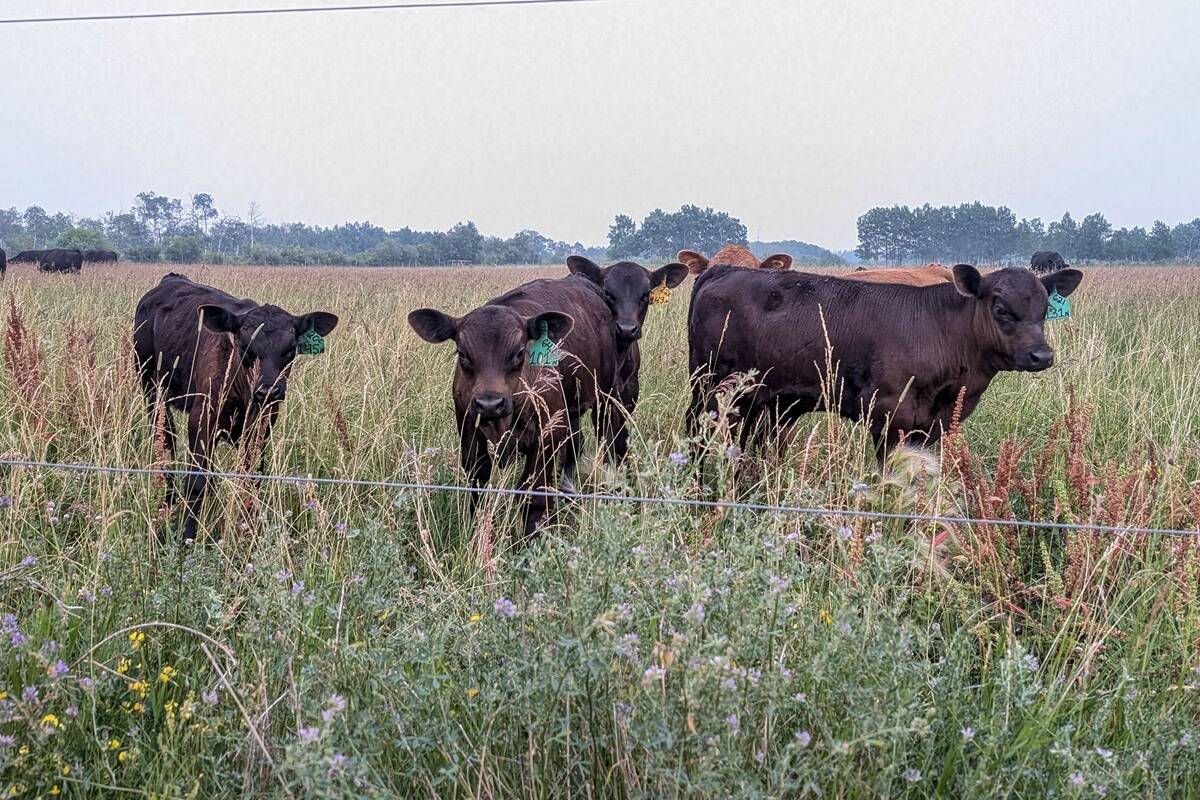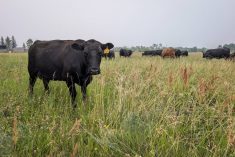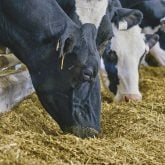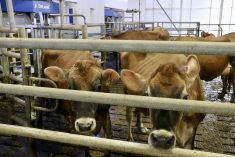A final round of payments and programs for Canada’s supply-managed dairy and feather sectors — this time in compensation for the sequel deal to NAFTA — is now on deck for 2023 and beyond.
Compensation to those sectors for domestic market concessions granted under the Canada-U.S.-Mexico Agreement (CUSMA) was telegraphed in federal Finance Minister Chrystia Freeland’s fall economic statement on Nov. 3, then fleshed out in a separate announcement Monday from Agriculture Minister Marie-Claude Bibeau.
For CUSMA — the result of renegotiations of the North American Free Trade Agreement during former U.S. president Donald Trump’s administration — Canadian dairy, poultry and egg producers can expect to share over $1.7 billion in funding over the years 2023 to 2029.
Read Also

‘Not a happy Trump supporter’: U.S. Cattle ranchers hit by push for lower beef prices
Much like the price of eggs during the Biden administration, the cost of beef has become an emblem of the affordability crisis in Donald Trump’s America. Beef prices hit record highs earlier this year as the cattle herd shrank and consumer demand remained strong.
The new compensation for CUSMA follows $3.1 billion in payments and programs previously set up in response to concessions granted under the Canada-European Union (CETA) and Trans-Pacific Partnership (CPTPP) trade pacts.
“We made a commitment to fully and fairly compensate the market losses suffered by dairy, poultry and egg producers and processors, and that is what we have done,” Bibeau said in a release Monday.
Bibeau also reiterated the federal government’s previously announced commitment “not to concede any further market shares under supply management during future trade negotiations.”
The CUSMA compensation envelope, as laid out Monday, will include:
- up to $1.2 billion under the Dairy Direct Payment Program for dairy farmers;
- up to $112 million under the Poultry and Egg On-Farm Investment Program for poultry and egg producers;
- up to $105 million to back further investments in dairy, poultry and egg processing under the Supply Management Processing Investment Fund, and
- up to $300 million for the Canadian dairy sector through a new program due to start next year, backing “innovation and investment into large-scale projects to add value to solids-non-fat.”
Solids-non-fat, or serum solids, are byproducts of milk processing that include lactose, caseins, whey proteins and minerals.
The government said Monday it plans to “consult closely with industry stakeholders” in developing parameters for that last program.
Under the dairy direct payment program, CUSMA compensation for a dairy farmer with an average herd of 80 head, based on 2021 production, will be $26,507 (25 per cent) for 2024, $22,089 (21 per cent) for 2025, $22,089 (21 per cent) for 2026, $13,253 (13 per cent) each for 2027 and 2028 and $8,835 (eight per cent) for 2029, the government said Monday.
“The government made a promise to compensate producers for the losses caused by the CUSMA agreement. Today, they can say they fulfilled their promise. We can now look towards the future,” Dairy Farmers of Canada chair Pierre Lampron said in the government’s release.
The feather sector organizations, in a separate statement Nov. 4, also thanked federal officials for fulfilling their promise on the CUSMA file.
“However, there is still more work to be done,” the groups said, as feather sector producers “expect the government to uphold its commitment to no additional access to our sectors in future trade agreements and bilateral arrangements.”
Canada had 9,952 dairy farms as of 2022; the dairy sector generated $7.39 billion in total net farm cash receipts last year, the government said. The combined chicken, turkey, egg and broiler hatching egg sectors, meanwhile, generated over $5.5 billion in farm cash receipts in 2021, and included 4,773 farms as of 2022.
In all, a line item in Freeland’s fall economic statement puts “full and fair compensation for supply-managed sectors” at $1.2 billion in 2022-23, $145 million in each of the following three fiscal years, $45 million in 2026-27 and $42 million in 2027-28.
Other items in the economic statement include a plan to eliminate interest on federal student and apprentice loans; restoration funding for uninsurable damage to farm and other properties damaged in Hurricane Fiona; doubling the GST credit for lower-income households; and a new Canada Dental Benefit. — Glacier FarmMedia Network
















